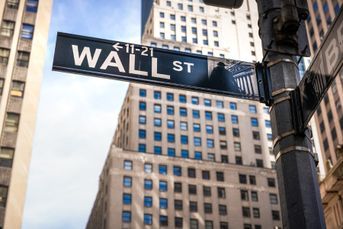Global bonds fall again amid stubborn inflation outlook

Traders expect to be dealing with the challenge for some time yet.
Global bond investors are coming to terms with the likelihood that interest rates are going to stay high for the foreseeable future.
From the US and Germany to Australia and Japan, the past two weeks have been punishing for investors who have clung to hopes for rolling rate cuts this year from the world’s biggest central banks. The reality is, inflation has yet to be fully tamed, and that’s put central banks on guard and left bondholders with losses.
Global government debt lost about 1.6% between May 16 — around the time when many yields were at their lows of the month before reversing higher — through May 29, according to a Bloomberg Index. The sector is down about 5.2% so far this year, erasing all of the gains from late last year, when optimism over the prospect of imminent worldwide rate cuts was at its peak.
As long as inflation stays sticky, economies remain buoyant and governments keep adding to debt piles, bonds remain vulnerable. Longer-dated debt in particular has been coming under pressure lately, with the US 10-year yield on track for its biggest weekly jump since mid-April.
“This was supposed to be the year of the bond, and it’s proven not to be,” said Ian Pollick, global head of FICC strategy at Canadian Imperial Bank of Commerce. “We are in higher-for-longer right now. So bond markets are trying to recalibrate.”
Once pricing in almost seven quarter-point Federal Reserve rate reductions in 2024, US swaps traders are now barely betting on one reduction, and officials are keeping alive the potential further rate hikes. Even with some central banks already cutting, and others — most notably the European Central Bank — expected to start doing so imminently, economic conditions are such that the pace of reductions will likely be measured, and rates will stay elevated.
Much of the pressure has emanated from the US, where weak Treasury auctions in recent days have fanned concerns over investor demand at a time when the US is selling more bonds than ever. Auctions of two-, five- and seven-year Treasury notes all drew higher-than-anticipated yields, a sign interest in buying the securities fell short of expectations.
US two-year yields nearly reached 5% on Wednesday for the first time since May 1, putting last year’s peak level of 5.26% within sight.
An example of how can be quite fickle:
Last October, there was widespread concen about who would buy the heavy issuance of US government bonds. These worries almost disappeared in the first quarter of 2024 but have resurfaced in recent days, pushing yields higher (please see… pic.twitter.com/ILsPAADP9s
— Mohamed A. El-Erian (@elerianm) May 29, 2024
On Thursday, Treasury yields retreated from their worst, aided in part as gauges of inflation in US first-quarter economic data were revised lower. They edged higher Friday, with the two-year yield at about 4.94% while rates on 10-year debt were at 4.56%.
The market may win a further reprieve Friday if PCE inflation numbers, the Fed’s preferred gauge, come in better than expected. Even so, Fed officials from Chair Jerome Powell on down have signaled they’ll need to see a run of good inflation data and softening growth before moving to cut. That will likely take months.
Data in other regions is giving policymakers and bondholders plenty to chew on, too. In Japan, where the central bank is only just starting to normalize policy, yields touched fresh highs this week. Some traders are speculating that authorities will decide to decrease its JGB purchases from the current monthly total of about ¥6 trillion ($38 billion) at its monetary policy meeting in June.
In Australia, inflation came in faster than expected for April, bolstering the case for the Reserve Bank to keep interest rates at a 12-year high next month and driving yields to some of their highest levels this year.
European inflation data also made for an uncomfortable reading, particularly since the ECB has effectively pre-committed to cutting rates for the first time next week. The reports showed inflation quickened more than expected for Germany, Spain and France this month ahead of the reading for the whole euro area later Friday.
Meanwhile, the region’s economic recovery is underway — albeit from a low base — with gauges of confidence and activity picking up, while the unemployment rate just reached a new all-time low. Where just two weeks ago money markets were pricing 75 basis points of cuts this year, a third cut is now seen as a 40% probability as traders digest the limits of how much the ECB can ease.
This outlook is what marks this cycle out as “unusual,” given cuts typically come thick and fast as the economy keels over, said Guy Miller, chief market strategist at Zurich Insurance Company Ltd. He sees better value in US Treasuries than bunds, but reckons it’s unlikely that bonds yields can move significantly lower.
“The key thing, let’s be clear, is going to be inflation,” he said. “If these wage numbers don’t come down and service inflation doesn’t come down in the months ahead, this might be the first rate cut for a while before we get anything else coming through. And I think that’s going to be even more important for the Fed.”
Nicolas Trindade, a senior portfolio manager at AXA Investment Managers, is wary that inflation could continue to surprise to the upside. To protect against the potential of a resurgence of price pressures, Trindade has a “large overweight” position in short-dated Treasury Inflation-Protected Securities, or TIPS.
“The risk – the thing that will finally break the market – is that the Fed opens the door to interest rate hikes,” Trindade said. “That is not our central scenario, but investors must have it at the back of their minds.”
Learn more about reprints and licensing for this article.








